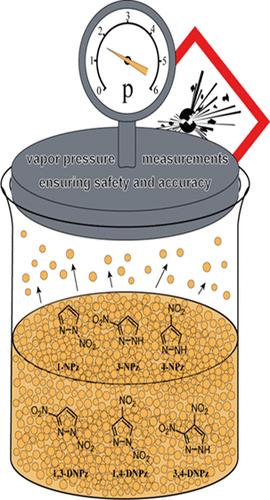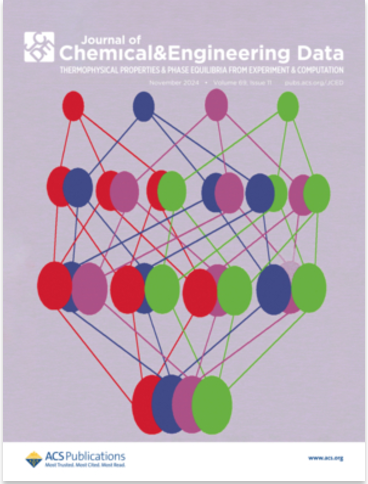The Volatility of Energetic Materials and How to Safely Determine Them: Exemplified by Nitro-Pyrazoles via Transpiration Method, Differential Scanning, and Bomb Calorimetry
IF 2
3区 工程技术
Q3 CHEMISTRY, MULTIDISCIPLINARY
引用次数: 0
Abstract
This publication presents a detailed examination of the volatility of high energy density materials, specifically focusing on pure nitro-pyrazoles. The study uses the transpiration method to measure the vapor pressure and corresponding parameters of these energetic materials in the range of 274–422 K, ensuring safety and accuracy. The investigations were supported by analysis using differential scanning and bomb calorimetry in order to incorporate parameters such as the molar heat capacity and molar standard enthalpy of formation. The vapor pressure provides crucial insights into the phase change ability of these substances and is fundamental for understanding the risk associated with handling these materials, their potential for detection, and their overall thermodynamic behavior. The publication thoroughly discusses the safety measures in place to handle these blastable materials, the innovative use of open and modular setups, and the advantages of using diluted samples for analysis. The results of the study contribute significantly to the knowledge of the volatility behavior of these compounds and offer guidance about their safe handling and potential applications.

高能材料的挥发性及其安全测定方法:以硝基吡唑为例,通过蒸腾法、差示扫描法和炸弹量热法进行分析
本出版物详细研究了高能量密度材料的挥发性,特别关注纯硝基吡唑。研究采用蒸腾法测量了这些高能量材料在 274-422 K 范围内的蒸气压和相应参数,确保了安全性和准确性。研究还利用差示扫描量热法和炸弹量热法进行分析,以纳入摩尔热容量和摩尔标准形成焓等参数。蒸气压为了解这些物质的相变能力提供了重要依据,也是了解处理这些材料的相关风险、检测潜力及其整体热力学行为的基础。该出版物详尽讨论了处理这些易爆材料的安全措施、开放式和模块化设置的创新使用,以及使用稀释样品进行分析的优势。研究结果极大地促进了对这些化合物挥发行为的了解,并为安全处理和潜在应用提供了指导。
本文章由计算机程序翻译,如有差异,请以英文原文为准。
求助全文
约1分钟内获得全文
求助全文
来源期刊

Journal of Chemical & Engineering Data
工程技术-工程:化工
CiteScore
5.20
自引率
19.20%
发文量
324
审稿时长
2.2 months
期刊介绍:
The Journal of Chemical & Engineering Data is a monthly journal devoted to the publication of data obtained from both experiment and computation, which are viewed as complementary. It is the only American Chemical Society journal primarily concerned with articles containing data on the phase behavior and the physical, thermodynamic, and transport properties of well-defined materials, including complex mixtures of known compositions. While environmental and biological samples are of interest, their compositions must be known and reproducible. As a result, adsorption on natural product materials does not generally fit within the scope of Journal of Chemical & Engineering Data.
 求助内容:
求助内容: 应助结果提醒方式:
应助结果提醒方式:


